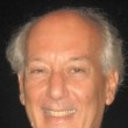The elusive cause of instability in unstable angina.
关键词
抽象
The causes of unstable angina are still largely unknown. However, some facts deriving from angiographic, postmortem, and pathophysiologic studies are well established. Angiographic findings: coronary thrombi and complicated stenoses are more frequent in unstable than in stable angina. Conversely, the severity of coronary atherosclerosis and the development of collateral circulation is similar in both coronary syndromes. Postmortem findings: the following features are more frequent in unstable than in stable angina: (1) mural thrombi, which often represent out-growth from the inside of a fissured plaque; (2) inflammatory cells at the site of plaques and in perivascular nerves; and (3) contraction bands in smooth muscle cells of the media surrounding plaques. However, fissured plaques can be found in 10% of individuals dying of noncardiac causes, and fissured plaque may occasionally be missing under the coronary thrombus in unstable angina. Pathophysiologic findings: patients with unstable angina compared with those with stable angina exhibit: (1) higher levels of serotonin in the coronary sinus; (2) higher systemic levels of fibrino-peptide A; (3) higher urinary levels of thromboxane A2 metabolites; and (4) a greater coronary reactivity to constrictor stimuli. A critical analysis of these established facts is required to set the stage for a better comprehension of the causes which can cause a coronary segment to progress in a stuttering way toward acute persistent coronary occlusion and myocardial infarction. Plaque fissure is likely to be an important background thrombogenic stimulus in many cases.(ABSTRACT TRUNCATED AT 250 WORDS)


